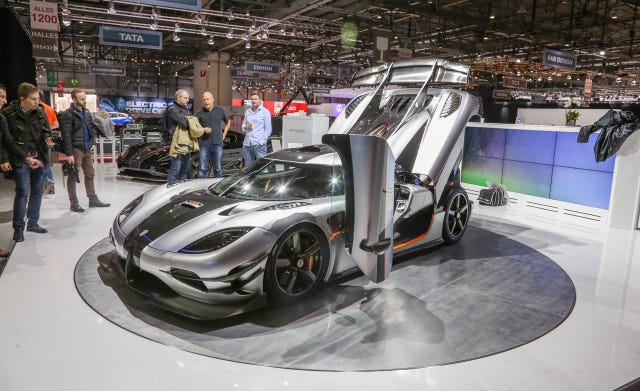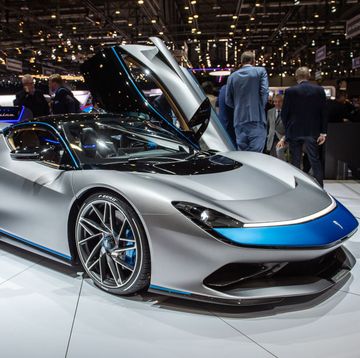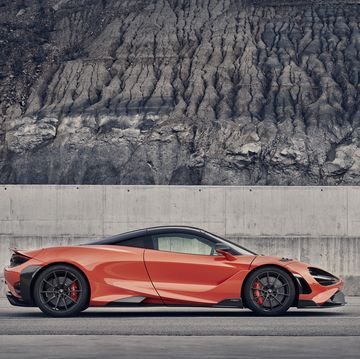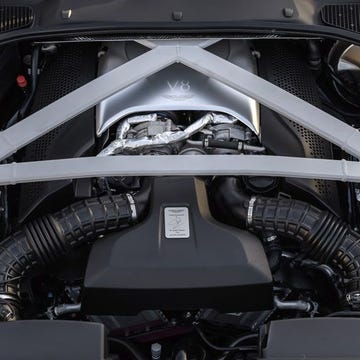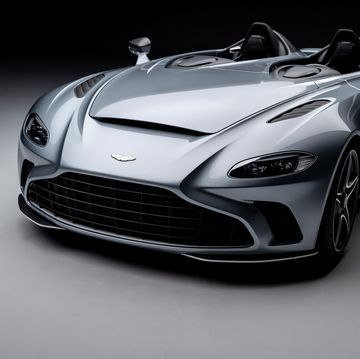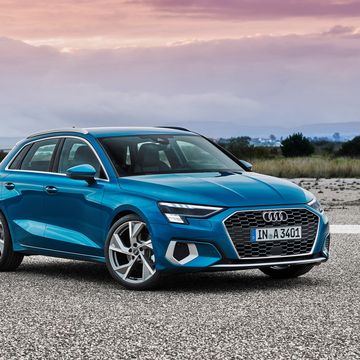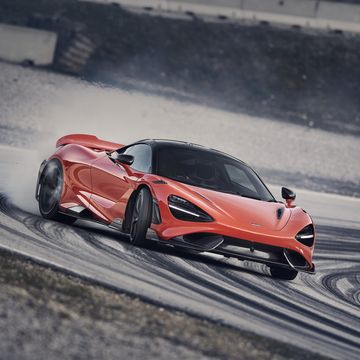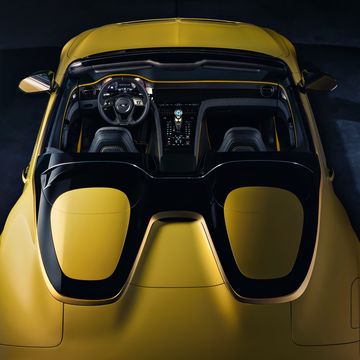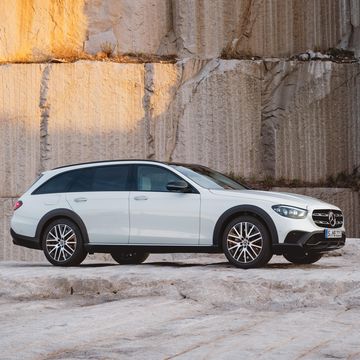Smelling blood in the water surrounding the go-to hypercar of our day, the Bugatti Veyron, Koenigsegg is using the 2014 Geneva motor show to take a bite out of the Bug’s glory. The teeth? The One:1, a highly modified Agera R. So named for its (more or less) 1:1 power-to-weight ratio, the One:1 boasts 1341 horsepower and a claimed curb weight of 1360 kilograms. Yes, that means that, in American, non-funny-numbers terms, the 2998-pound One:1 technically is the One:2. Regardless, the hottest Bugattis put out 1200 horsepower, and the Koenigsegg’s packing another 141 ponies on top of that, while lugging around far less weight.
Suga Det, Bugatti!
Setting aside the liberties Koenigsegg’s taking with the car’s name and that the company’s claimed curb weight is predicated on the car filled with ancillary fluids, but only half a tank of gas—our test numbers include a full tank—the One:1 is nonetheless hugely impressive. Whereas Bugatti squeezes 1000-plus-horsepower from a quad-turbocharged W-16 engine, the Koenigsegg does the deed with half the number of cylinders and turbos.
The Agera’s 5.0-liter V-8 and seven-speed dual-clutch automatic transmission carry over, but the turbos’ boost is turned up from 20.3 psi to an absurd 26.1 psi, bringing an additional 201 horsepower and 126 lb-ft of torque (for 1011 lb-ft of peak twist!). Usable torque—so, 738 lb-ft—is available from 3000 rpm to 8000 rpm; maximum revs stand at 8250. Fun fact: Since the One:1’s engine produces 1000 kW of power, Koenigsegg claims it’s the first “megawatt” supercar, which makes it a “megacar.” Oh, and for some reason, the engine is flex-fuel-capable and able to run on gasoline, race fuel, or E85. Because, y’know, earth-friendliness and stuff.
We’re Going to . . . Plaid!
Performance, as you’d expect, is probably insane, except that Koenigsegg so far only is quoting 0-to-249-mph acceleration times. (It hits that speed in 20 seconds.) Even though the automaker describes top speed as not being a “priority,” it does expect the One:1 to be the world’s fastest production car. It’ll theoretically top out at 273 mph, which should put some pressure on Hennessey’s sorta-Bugatti-beating Venom GT. Meanwhile, Bugatti will need to put its tail between its legs until its next-generation car arrives.
Helping the One:1 hit such ludicrous speeds are its specially designed Michelin Pilot Sport Cup 2 tires and its extensive aerodynamic work. Both the front splitter and rear wing are active pieces, and everything from the door mirrors to the underbody venturis have been massaged to reduce drag, add stability, and/or increase downforce. Beneath the front splitter there’s a vent that, above 155 mph, closes to block airflow through the One:1’s underbody venturis. This prevents excess downforce from getting in the way of terminal velocity. The rear wing features high-speed/low-drag, braking, and high downforce settings, mechanically tilting through a range between -6 degrees (low drag) and 25 degrees (air-brake). The huge spoiler is cantilevered and nearly sits higher than the One:1’s roof; it almost looks ridiculous, but we’ve decided it’s “functional with flair,” especially given it contributes to a claimed 1345 pounds of downforce at 160 mph.
Koenigsegg hasn’t discussed pricing or production numbers yet, but given that it seems confident in the One:1’s ability to take over production-car top-speed honors, we have to imagine a run of at least 30 cars is planned. (That’s the minimum number the Guinness Book of World Records says constitutes a “production” car.) Either way, those customers who sign on will get a raft of neat equipment, including carbon-fiber wheels with central locking hubs, carbon-ceramic brakes, six-point racing harnesses, and a three-year warranty. With 26.1 psi of turbo boost, we imagine that last feature might be quite the selling point.
Of course, this being a hypercar, customers can customize it to their hearts’ content, adding stuff like one-piece racing seats, active shocks, unique interior trim, custom fitted luggage, a diamond-encrusted key, active noise cancellation, a telematics system, and the option to leave the carbon-fiber body panels bare save for a layer of clearcoat. But equipment lists are boring. Know what isn’t boring? Watching the first “megacar” shoot for top-speed bragging rights while simultaneously working to cement its creator’s position among the top upstart supercar-makers like Pagani and McLaren. Now, Koenigsegg, make with some video of this thing in action!

